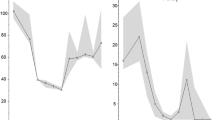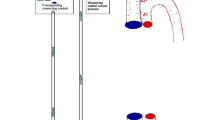Abstract
Two questions were addressed by this study: What is the effect of vasogenic brain edema on rCBF and glucose utilization: will a vasodilating drug, papaverine hydrochloride, alter the effects of the edema or the degree of edema? A “couple” has been shown for brain function and metabolism with rCBF (9), which may be disrupted in brain injury (8). Edema is an additional variable. Changes in energy metabolism in vasogenic edema have been reported (10,5). Diminished CBF in vasogenic edema is reported to be directly related to brain tissue water content (1,2,4). Others however, have been unable to correlate water content of brain tissue and changes in CBF (7). The rate of edema formation may be more important than the amount of edema formed, in terms of clinical deficit and the EEG (3). It appears therefore, that brain water content alone may not explain CBF and metabolic changes. Little is known of the effect of a vasodilating drug on these variables in edematous brain.
Access this chapter
Tax calculation will be finalised at checkout
Purchases are for personal use only
Preview
Unable to display preview. Download preview PDF.
Similar content being viewed by others
References
Frei H, Wallenfang TH et al (1973) Regional cerebral blood flow and regional metabolism in cold induced oedema. Acta Neurochirurg 29:15–28
Grote J, Reulen HJ, Schubert R (1978) Increased tissue water in the brain. Influence of regional cerebral blood flow and oxygen supply. Adv Neurol 20:333–339
Marshall LF, Bruce DA, Graham DI, Langfitt TW (1976) Alterations in behaviour, brain electrical activity, cerebral blood flow and intracranial pressure produced by triethyltin sulfate induced cerebral edema. Stroke 7:21–25
Meinig G, Reulen H, Magavly C et al (1972) Changes of cerebral hemodynamics and energy metabolism during increased CSF pressure and brain edema. In: Brock M, Dietz H (eds) Intracranial Pressure. Springer, Berlin Heildelberg New York, p 79
Nelson S, Mantz M (1971) Energy reserve levels in edematous mouse brain. Exp Neurol 31:53–59
Nelson S, Mantz M, Maxwell J (1971) Use of specific gravity in the measurement of cerebral edema. J Applied Physiol 30:368–371
Overgaard J, Tweed WA (1976) Cerebral circulation after head injury. Part 2: The effects of traumatic brain edema. J Neurosurg 45:292–300
Raichel, ME, Gado MH, Grubb RL, Eichling JO (1975) In vivo correlation between regional cerebral blood flow and oxygen utilization in man. Seventh Int Symp on Cerebral Circulation and Metabolism. (Abst.) Aviemore, p 143
Reivich M (1974) Blood flow metabolism couple in brain. Res Pub I Assoc Res Nerv Ment Dis 53:125–140
Reulen HJ (1976) Vasogenic brain oedema. Br J Anaesth 48:741–752
Sakurada L, Kennedy C, Jehle J, Brown JD, Carbin GL, Sokoloff L (1978) Measurement of local cerebral blood flow with iodo{14C}antipyrine. Amer J Physiol 234:59–60
Sikoloff L, Reivich M, Kennedy C et al (1977) The (14C) deoxyglucose method for the measurement of local cerebral glucose utilization: Theory procedure and normal values in the conscious and anesthetized albino rat. J Neurochem 28:897–916
Editor information
Editors and Affiliations
Rights and permissions
Copyright information
© 1980 Springer-Verlag Berlin Heidelberg
About this paper
Cite this paper
Dick, A.R., Nelson, S.R., Turner, P.L. (1980). Quantified Regional Cerebral Glucose Consumption, rCBF and Edema, and the Effects of Papaverine, in Cats with Cortical Cold Injury. In: Shulman, K., Marmarou, A., Miller, J.D., Becker, D.P., Hochwald, G.M., Brock, M. (eds) Intracranial Pressure IV. Springer, Berlin, Heidelberg. https://doi.org/10.1007/978-3-642-67543-0_58
Download citation
DOI: https://doi.org/10.1007/978-3-642-67543-0_58
Publisher Name: Springer, Berlin, Heidelberg
Print ISBN: 978-3-642-67545-4
Online ISBN: 978-3-642-67543-0
eBook Packages: Springer Book Archive




